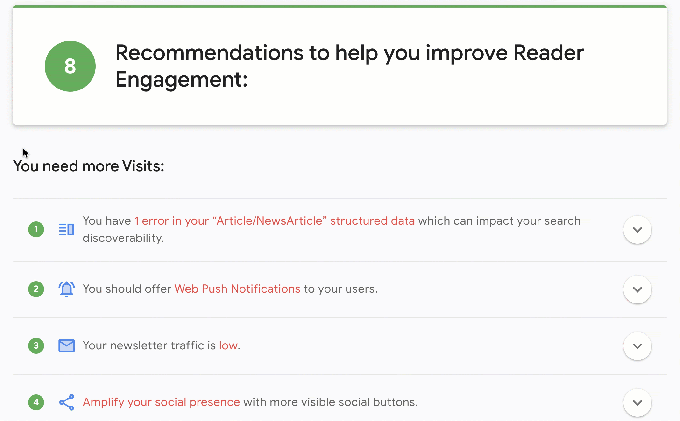It’s more than two years since a flagship update to the European Union’s data protection regime moved into the application phase. Yet the General Data Protection Regulation (GDPR) has been dogged by criticism of a failure of enforcement related to major cross-border complaints — lending weight to critics who claim the legislation has created a moat for dominant multinationals, at the expense of smaller entities.
Today the European Commission responded to that criticism as it gave a long scheduled assessment of how the regulation is functioning, in its first review two years in.
While EU lawmakers’ top-line message is the clear claim: ‘GDPR is working’ — with commissioners lauding what they couched as the many positives of this “modern and horizontal piece of legislation”; which they also said has become a “global reference point” — they conceded there is a “very serious to-do list”, calling for uniformly “vigorous” enforcement of the regulation across the bloc.
So, in other words, GDPR decisions need to flow more smoothly than they have so far.
Speaking at a Commission briefing today, Věra Jourová, Commission VP for values and transparency, said: “The European Data Protection Board and the data protection authorities have to step up their work to create a truly common European culture — providing more coherent and more practical guidance, and work on vigorous but uniform enforcement.
“We have to work together, as the Board and the Member States, to address concerns — in particular those of the small and medium enterprises.”
Justice commissioner, Didier Reynders, also speaking at the briefing, added: “We have to ensure that [GDPR] is applied harmoniously — or at least with the same vigour across the European territory. There may be some nuanced differences but it has to be applied with the same vigour.
“In order for that to happen data protection authorities have to be sufficiently equipped — they have to have the relevant number of staff, the relevant budgets, and there is a clear will to move in that direction.”
Front and center for GDPR enforcement is the issue of resourcing for national data protection authorities (DPAs), who are tasked with providing oversight and issuing enforcement decisions.
Jourová noted today that EU DPAs — taken as a whole — have increased headcount by 42% and budget by 49% between 2016 and 2019.
However that’s an aggregate which conceals major differences in resourcing. A recent report by pro-privacy browser Brave found that half of all national DPAs receive just €5M or less in annual budget from their governments, for example. Brave also found budget increases peaked for the application of the GDPR — saying, two years in, governments are now slowing the increase.
It’s also true that DPA case load isn’t uniform across the bloc, with certain Member States (notably Ireland and Luxembourg) handling many more and/or more complex complaints than others as a result of how many multinationals locate their regional HQs there.
One key issue for GDPR thus relates to how the regulation handles cross border cases.
A one-stop-shop mechanism was supposed to simplify this process — by having a single regulator (typically in the country where the business has its main establishment) taking a lead on complaints that affect users in multiple Member States, and other interested DPAs not dealing directly with the data processor. But they do remain involved — and, once there’s a draft decision, play an important role as they can raise objections to whatever the lead regulator has decided.
However a lot of friction seems to be creeping in via current processes, via technical issues related to sharing data between DPAs — and also via the opportunity for additional legal delays.
In the case of big tech, GDPR’s one-stop-shop has resulted in a major backlog around enforcement, with multiple complaints being re-routed via Ireland’s Data Protection Commission (DPC) — which is yet to issue a single decision on a cross border case. And has more than 20 such investigations ongoing.
Last month Ireland’s DPC trailed looming decisions on Twitter and Facebook — saying it had submitted a draft decision on the Twitter case to fellow DPAs and expressed hope that case could be finalized in July.
Its data protection commissioner, Helen Dixon, had previously suggested the first cross border decisions would be coming in “early” 2020. In the event, we’re past half way through the year still with no enforcement on show.
This looks especially problematic as there is a counter example elsewhere in the EU: France’s CNIL managed to issue a decision in a major GDPR case against Google all the way back in January 2019. Last week the country’s top court for administrative law cemented the regulator’s findings — dismissing Google’s appeal. Its $57M fine against Google remains the largest yet levied against big tech under GDPR.
Asked directly whether the Commission believes Ireland’s DPC is sufficiently resourced — with the questioner noting it has multiple ongoing investigations into Facebook, in particular, with still no decisions taken on the company — Jourová emphasized DPAs are “fully independent”, before adding: “The Commission has no tools to push them to speed up but the cases you mention, especially the cases that relate to big tech, are always complex and they require thorough investigation — and it simply requires more time.”
However CNIL’s example shows effective enforcement against major tech platforms is possible — at least, where there’s a will to take on corporate power. Though France’s relative agility may also have something to do with not having to deal simultaneously with such a massive load of complex cross-border cases.
At the same time, critics point to Ireland’s cosy political relationship with the corporate giants it attracts via low tax rates — which in turn raises plenty of questions when set against the oversized role its DPA has in overseeing most of big tech. The stench of forum shopping is unmistakable.
Criticism of national regulators extends beyond Ireland, too, though. In the UK, privacy experts have slammed the ICO’s repeated failure to enforce the law against the adtech industry — despite its own assessments finding systemic flouting of the law. The country remains an EU Member State until the end of the year — and the ICO is the best resourced DPA in the bloc, in terms of budget and headcount (and likely tech expertise too). Which hardly reflects well on the functional state of the regulation.
Despite all this, the Commission continues to present GDPR as a major geopolitical success, claiming — as it did again today — that it’s ahead of the digital regulatory curve globally at a time when lawmakers almost everywhere are considering putting harder limits on Internet players.
But there’s only so long it can sell a success on paper. Without consistently “vigorous” enforcement, the whole framework crumbles — so the EU’s executive has serious skin in the game when it comes to GDPR actually doing what it says on the tin.
Pressure is coming from commercial quarters too — not only privacy and consumer rights groups.
Earlier this year, Brave lodged a complaint with the Commission against 27 EU Member States — accusing them of under resourcing their national data protection watchdogs. It called on the EU executive to launch an infringement procedure against national governments, and refer them to the bloc’s top court if necessary. So startups are banging the drum for enforcement too.
If decision wheels don’t turn on their own, courts may eventually be needed to force Europe’s DPAs to get a move on — albeit, the Commission is still hoping it won’t have to come to that.
“We saw a considerable increase of capacities both in Ireland and Luxembourg,” said Jourová, discussing the DPA resourcing issue. “We saw a sufficient increase in at least half of other Member States DPAs so we have to let them do very responsible and good work — and of course wait for the results.”
Reynders suggested that while there has been an increase in resource for DPAs the Commission may need to conduct a “deeper” analysis — to see if more resource is needed in some Member States, “due to the size of the companies at work in the jurisdiction of such a national authority”.
“We have huge differences between the Member States about the need to react to the requests from the companies. And of course we need to reinforce the cooperation and the co-ordination on cross border issues. We need to be sure that it’s possible for all the national authorities to work together. And in the network of national authorities it’s the case — and with the Board [EDPB] it’s possible to organize that. So we’ll continue to work on it,” he said.
“So it’s not only a question to have the same kind of approach in all the Member States. It’s to be fit to all the demands coming in your jurisdiction and it’s true that in some jurisdictions we have more multinationals and more members of high tech companies than in others.”
“The best answer will be a decision from the Irish data protection authority about important cases,” he added.
We’ve reached out to the Irish DPC and the EDPB for comment on the Commission’s GDPR assessment. The former put out a report yesterday summarizing its regulatory activity over the past two years — in which it notes that since May 2018, when GDPR begun being applied, it’s opened 24 cross-border inquiries and 53 national inquiries. It further notes: “Through Supervision action, the DPC has brought about the postponement or revision of six planned big tech projects with implications for the rights and freedoms of individuals.”
Update: The DPC’s deputy commissioner, Graham Doyle, told us: “The Irish DPC has grown considerably in terms of staffing in recent years, from 30 staff in 2014 to 140 staff today. This growth will continue in 2020 and we expect to have 175 staff by year end. However, we must continue to increase these resources beyond 2020, including further expansion of specialist resources, e.g. technologists and legal specialists, to ensure that we can continue to fulfil the important role that we have.”
Asked whether the Commission has a list of Member States that it might instigate infringement proceedings against related to the terms of GDPR — which, for example, require governments to provide adequate resourcing to their national DPA in order that they can properly oversee the regulation — Reynders said it doesn’t currently have such a list.
“We have a list of countries where we try to see if it’s possible to reinforce the possibilities for the national authorities to have enough resources — human resources, financial resources, to organize better cross border activities — if at the end we see there’s a real problem about the enforcement of the GDPR in one Member State we will propose to go maybe to the court with an infringement proceeding — but we don’t have, for the moment, a list of countries to organize such a kind of process,” he said.
The commissioners were a lot more comfortable talking up the positives of GDPR, with Jourová noting, with a sphinx-like smile, how three years ago there was “literal panic” and an army of lobbyists warning of a “doomsday” for business and innovation should the legislation pass. “I have good news today — no dooms day was here,” she said.
“Our approach to the GDPR was the right one,” she went on. “It created the more harmonized rules across the Single Market and more and more companies are using GDPR concepts, such as privacy by design and by default, as a competitive differentiation.
“I can say that the philosophy of one continent, one law is very advantageous for European small and medium enterprises who want to operate on the European Single Market.
“In general GDPR has become a truly European trade mark,” she added. “It puts people and their rights at the center. It does not leave everything to the market like in the US. And it does not see data as a means for state supervision, as in China. Our truly European approach to data is the first answer to difficult questions we face as a society.”
She also noted that the regulation served as inspiration for the current Commission’s tech-focused policy priorities — including a planned “human centric approach to AI“.
“It makes us pause before facial recognition technology, for instance, will be fully developed or implemented. And I dare to say that it makes Europe fit for the digital age. On the international side the GDPR has become a reference point — with a truly global convergence movement. In this context we are happy to support trade and safe digital data flows and work against digital protectionism.”
Another success the commissioners credited to the GDPR framework is the region’s relatively swift digital response to the coronavirus — with the regulation helping DPAs to more quickly assess the privacy implications of COVID-19 contacts tracing apps and tools.
Reynders lauded “a certain degree of flexibility in the GDPR” which he said had been able to come into play during the crisis, feeding into discussions around tracing apps — on “how to ensure protection of personal data in the context of such tracing apps linked to public and individual health”.
Under its to-do list, other areas of work the Commission cited today included ensuring DPAs provide more such support related to the application of the regulation by coming out with guidelines related to other new technologies. “In various new areas we will have to be able to provide guidance quickly, just as we did on the tracing apps recently,” noted Reynders.
Further increasing public awareness of GDPR and the rights it affords is another Commission focus — though it said more than two-third of EU citizens above the age of 16 have at least heard of the GDPR. But it wants citizens to be able to make what Reynders called “best use” of their rights, perhaps via new applications.
“So the GDPR provides support to innovation in this respect,” he said. “And there’s a lot of work that still needs to be done in order to strengthen innovation.”
“We also have to convince those who may still be reticent about the GDPR. Certain companies, for instance, who have complained about how difficult it is to implement it. I think we need to explain to them what the requirements of the GDPR and how they can implement these,” he added.


 At its core, much of what Ellevest offers is similar to other robo-advisors, but it differentiates itself by way of the financial and career advice it offers through its coaching services, which are targeted towards women and their needs. Ellevest has been middle-of-the-road in terms of fee structure per
At its core, much of what Ellevest offers is similar to other robo-advisors, but it differentiates itself by way of the financial and career advice it offers through its coaching services, which are targeted towards women and their needs. Ellevest has been middle-of-the-road in terms of fee structure per 

